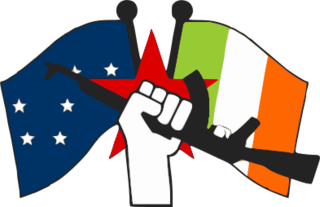
The Irish National Liberation Army is an Irish republican socialist paramilitary group formed on 8 December 1974, during the 30-year period of conflict known as "the Troubles". The group seeks to remove Northern Ireland from the United Kingdom and create a socialist republic encompassing all of Ireland. With membership estimated at 80–100 at their peak, it is the paramilitary wing of the Irish Republican Socialist Party (IRSP).
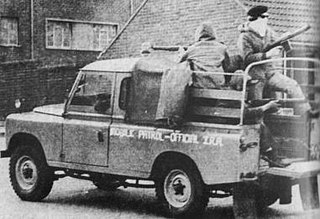
The Official Irish Republican Army or Official IRA was an Irish republican paramilitary group whose goal was to remove Northern Ireland from the United Kingdom and create a "workers' republic" encompassing all of Ireland. It emerged in December 1969, shortly after the beginning of the Troubles, when the Irish Republican Army (IRA) split into two factions. The other was the Provisional IRA. Each continued to call itself simply "the IRA" and rejected the other's legitimacy.
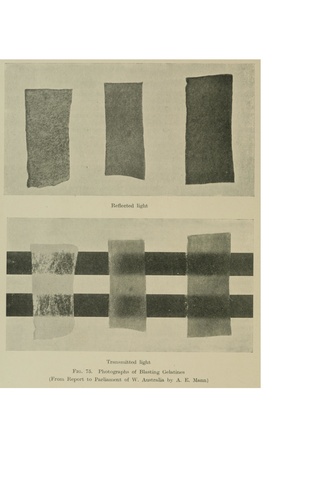
Gelignite, also known as blasting gelatin or simply "jelly", is an explosive material consisting of collodion-cotton dissolved in either nitroglycerine or nitroglycol and mixed with wood pulp and saltpetre.

The Irish People's Liberation Organisation was a small Irish socialist republican paramilitary organisation formed in 1986 by disaffected and expelled members of the Irish National Liberation Army (INLA), whose factions coalesced in the aftermath of the supergrass trials. It developed a reputation for intra-republican and sectarian violence as well as criminality, before being forcibly disbanded by the Provisional Irish Republican Army (IRA) in 1992.
Hugh Torney was an Irish National Liberation Army (INLA) paramilitary leader best known for his activities on behalf of the INLA and Irish Republican Socialist Party (IRSP) in a feud with the Irish People's Liberation Organisation (IPLO), a grouping composed of disgruntled former INLA members, in the mid-1980s.
The Droppin Well bombing or Ballykelly bombing occurred on 6 December 1982, when the Irish National Liberation Army (INLA) detonated a time bomb at a disco in Ballykelly, County Londonderry, Northern Ireland, United Kingdom. The disco, known as the Droppin Well, was targeted because it was frequented by British Army soldiers from nearby Shackleton Barracks. The bomb killed 17 people: eleven soldiers and six civilians, while dozens more were wounded. It was the deadliest attack during the INLA's paramilitary campaign and one of the deadliest bombings of The Troubles.

Divis Tower is a 20-floor, 200-foot (61 m) tall tower in Belfast, Northern Ireland. It is located in Divis Street, which is the lower section of the Falls Road. It is currently the fifteenth-tallest building in Belfast.
Joe McCann was an Irish republican paramilitary. A member of the Irish Republican Army and later the Official Irish Republican Army, he was active in politics from the early 1960s and participated in the early years of the Troubles in Northern Ireland. He was shot dead during a confrontation with RUC Special Branch members and British paratroopers in 1972.
This is a timeline of actions by the Irish National Liberation Army (INLA), an Irish republican socialist paramilitary group. Most of these actions took place as part of its 1975–1998 campaign during "the Troubles" in Northern Ireland. The INLA did not start claiming responsibility for its actions under the INLA name until January 1976 at which point they had already killed 12 people, before then they used the names People's Liberation Army (PLA) and People's Republican Army (PRA) to claim its attacks.

The Springfield Road is a residential area and road traffic thoroughfare adjacent to the Falls Road in west Belfast. The local population is predominantly Irish nationalist and republican. Along parts of the road are several interface area with the neighbouring Ulster loyalist areas of the Greater Shankill. The Springfield Road includes the Ballymurphy and New Barnsley districts and is overlooked by Black Mountain and Divis.
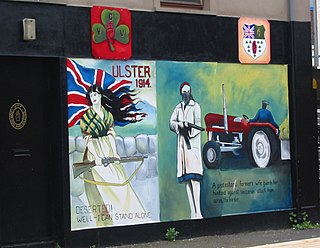
The 1994 Shankill Road killings took place on 16 June 1994 when the Irish National Liberation Army (INLA) shot dead three Ulster Volunteer Force (UVF) members – high-ranking member of the UVF Belfast Brigade staff Trevor King and two other UVF members, Colin Craig and David Hamilton – on the Shankill Road in Belfast, close to the UVF headquarters. The following day, the UVF launched two retaliatory attacks. In the first, UVF members shot dead a Catholic civilian taxi driver in Carrickfergus. In the second, they shot dead two Protestant civilians in Newtownabbey, who they believed were Catholics. The Loughinisland massacre, two days later, is believed to have been a further retaliation.
The Provisional IRA carried out two separate attacks on the same day on 1 May 1988 against British military personnel in the Netherlands which resulted in the deaths of three RAF members and another three being injured. It was the worst attack suffered by the British security forces during The Troubles from 1969 to 1998 in mainland Europe.
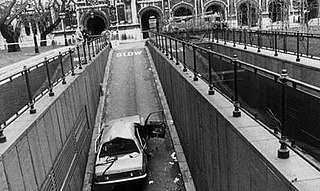
On 30 March 1979, Airey Neave, British Shadow Secretary of State for Northern Ireland, was assassinated by the Irish National Liberation Army with a bomb fixed under his car. The bomb detonated in the car park of the Palace of Westminster in London and mortally wounded Neave, who died shortly after being admitted to hospital.

The Central Bar bombing was a bomb attack on a pub in the town of Gilford near Portadown in County Down in Northern Ireland on 31 December 1975. The attack was carried out by members of the Irish National Liberation Army (INLA) using the covername "People's Republican Army" although contemporary reports also said the "Armagh unit" of the "People's Republican Army" had claimed responsibility. Three Protestant civilians were killed in the bombing.
The Official IRA's Belfast Brigade was founded in December 1969 after the Official IRA itself emerged in December 1969, shortly after the beginning of the Troubles, when the Irish Republican Army split into two factions. The other was the Provisional IRA. The "Officials" were Marxist-Leninists and worked to form a united front with other Irish communist groups, named the Irish National Liberation Front (NLF). The Brigade like the pre-split IRA brigade before the split had three battalions, one in West Belfast, one in North Belfast and the third in East Belfast. The Belfast Brigade was involved in most of the biggest early confrontations of the conflict like the Falls Curfew in 1970, the battles that followed after the introduction of Internment without trial in 1971 and Volunteers joined forces with the Provisional brigade to fight the British Army and UVF during the Battle at Springmartin in 1972. The first Commanding Officer (CO) of the brigade was veteran Billy McMillen who fought during the IRA Border Campaign. Shortly after the death of Official IRA Belfast "Staff Captain" Joe McCann in April 1972, the battalion structure of the brigade was done away with and command centralized under McMillen.
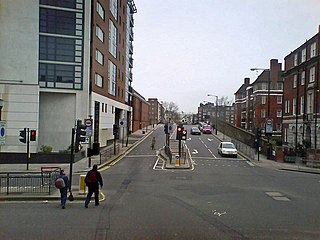
The Chelsea Barracks bombing was an attack carried out by a London-based Active Service Unit (ASU) of the Provisional IRA on 10 October 1981, using a remote-controlled nail bomb. The bomb targeted a bus carrying British Army soldiers just outside Chelsea Barracks. The blast killed two civilians and injured 40 people, among them 23 soldiers.

The Irish National Liberation Army Belfast Brigade was the main brigade area of the Irish National Liberation Army (INLA). The other Brigade areas were in Derry which was split between two battalions, the first in Derry City, and the second battalion in south County Londonderry and County Armagh which was also split into two battalions, a south Armagh and a north Armagh battalion, with smaller units in Newry, east and west County Tyrone and south County Fermanagh.
This is a timeline of actions by the Official Irish Republican Army, an Irish republican & Marxist-Leninist paramilitary group. Most of these actions took place as part of a Guerrilla campaign against the British Army & Royal Ulster Constabulary and internal Irish Republican feuds with the Provisional IRA & Irish National Liberation Army from the early 1970s - to the mid-1970s during the most violent phase of "the Troubles" in Northern Ireland.
A pub bombing or a public house bombing is an attack on a pub or public house using explosives and other bombing making material like nails, bolts, screws and similar objects which can cause horrific injuries when the bomb detonates. The Provisional IRA's Balcombe Street Gang used bolts and screws in many of their bomb attacks in the mid-1970s. Neo-nazi David Copeland used nails in his bombs.












